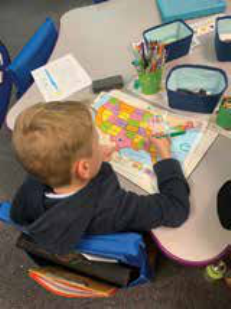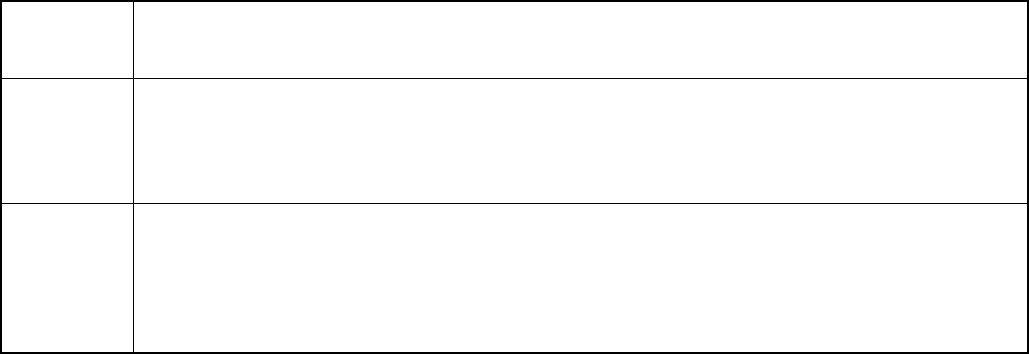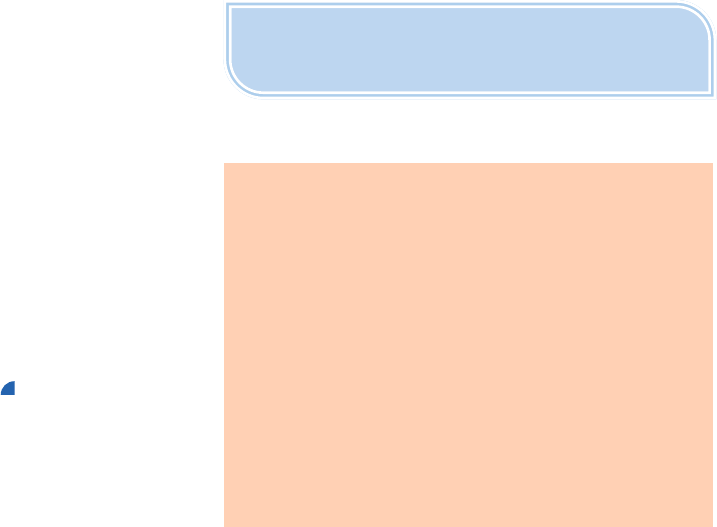
28 Social Studies and the Young Learner
I Do, We Do, You Do: Teaching
Map Skills in Early Grades
Michelle Bauml
“Here’s our state!” Courtney, a rst-grade student attending
a university laboratory school for students with mild learning
disabilities in Texas, eagerly identies a familiar place on a
simple United States desk map she is exploring. Courtney’s
student teacher
1
has prepared an explicit lesson plan for a
map skills unit focusing on the geographic theme of loca-
tion according to the state’s social studies standards. Today,
Courtney and her classmates will work with various maps to
practice using cardinal directions, which were introduced in
a previous lesson.
Student identies Texas on a desk map.
e purpose of this article is to explore the importance
of teaching map skills to children in Kindergarten–Grade
2 (K–2) and to describe key tenets of explicit instruction
as one approach to doing so. Explicit lessons that use an
I do, we do, you do scaolded approach to instruction are
eective for teaching children with or without learning dis-
abilities. Classroom teachers who are familiar with explicit
instruction may frequently use the model for reading and
math instruction while overlooking its potential for teaching
geography skills. e benets of using explicit instruction
to teach map skills include setting students up for success
with ample opportunities to practice and supporting growth
in spatial thinking.
Why Teach Map Skills?
It may seem obvious that the ability to read, use, and inter-
pret maps is a fundamental life skill in the world today.
Consider various experiences in unfamiliar places (e.g.,
oce buildings, mass transit, hiking trails) where locating
your position relative to where you are headed depends on
a map. Even global positioning systems (GPS) that provide
step-by-step directions to specic addresses require users to
apply geographic reasoning. Children need to learn about
maps, what they are for, what they represent, and how to
create and use them.
K–2 students can be taught to use and create simple maps
of familiar places.
2
ese kinds of activities not only develop
children’s condence with and understanding of geography;
they also promote a special type of thinking called spatial
thinking. Spatial thinking has three main components: “con-
cepts of space, tools of representation, and processes of rea-
soning. It is the concept of space that makes spatial thinking
a distinctive form of thinking.”
3
For example, you use spatial
thinking to locate items in your kitchen, follow a diagram to
assemble an object with multiple parts, and recognize that
some students are taller than others. Research has shown
that spatial thinking is associated with academic success,
learning, remembering, and problem-solving.
4
Spatial thinking is necessary for children to understand
that maps use symbols to represent locations of people,
places, and objects. is type of thinking is developmental.
5
e ability to think about locations, characteristics of dier
-
ent places, and relationships among those places begins to
develop in infancy as very young children become familiar
with their surroundings. Spatial thinking grows over time
and with practice.
6
Preschoolers who build with blocks and
assemble puzzles are learning spatial skills that can later be
applied to map-making.
Geographic knowledge in spatial terms—the “where-
ness” of places—is foundational to developing the kinds
of geographic thinking and reasoning that are needed to
understand the world and its interconnectedness.
7
erefore,
K–2 students need ample opportunities to practice spatial
thinking. Geography professor Sara Bednarz recommends
that spatial thinking “should not be considered an add-on to
an already full curriculum, but rather a necessary foundation
to building intellectual capacity in all learners.”
8
Social Studies and the Young Learner 36 (2) pp. 28–32
©2023 National Council for the Social Studies

November/December 2023 29
For children in grades K–2, strengthening spatial thinking
by creating and using maps to identify and examine loca-
tions, patterns, and places in the world is associated with
Dimension 2, Applying Disciplinary Concepts and Tools,
of the College, Career, and Civic Live (C3) Framework for
geography. Additionally, map skills are directly connected
to NCSS themes of PEOPLE, PLACES, AND ENVIRONMENTS and
GLOBAL CONNECTIONS, as well as the National Geography
Standards.
9
Maps can be instrumental in helping children contextual-
ize where historical, cultural, and current events have taken
place; many interdisciplinary connections can be made by
teaching about, with, and through maps.
10
For example,
a rst-grade inquiry titled “Family” published on the C3
Teachers website asks the compelling question, “How can
families be the same and dierent?”
11
e inquiry’s three
supporting questions focus on what families look like, what
families do, and what families do together. is inquiry could
be expanded to include geographically focused support-
ing questions such as: Where does my family live? How do
location and place aect what families do together? Where
does my family come from? Why do some families travel
to other places? e lesson presented in this article can be
used to teach foundational map reading skills that can help
K–2 students contextualize information related to the topic
of families, as well as other social studies topics.
Explicit Instruction
Explicit instruction is an evidence-based approach to teach-
ing characterized by a sequence of intentionally designed
supports with practice and feedback that guides students
through the learning process.
12
Research has shown that
explicit instruction can be applied in many grade levels
and subjects, and the method is particularly benecial for
students with disabilities.
13
Archer and Hughes oer a list of six teaching practices
for explicit instruction that includes review, presentation
of the lesson, guided practice, corrections and feedback,
independent practice, and weekly and monthly reviews.
14
Another approach is Fisher and Frey’s I do, we do, you do
structured teaching framework (see Table 1), which aligns
to principles of explicit instruction: teachers should state a
clear purpose for learning and model skills/techniques, oer
teacher-assisted (guided) practice with feedback, and gradu-
ally engage students in independent practice. Collaborative
practice (i.e., “you do it together”), where students practice
with each other, is an additional pedagogical tool in this
framework.
15
As the activities in this article demonstrate,
the I do, we do, you do approach can easily be applied to
map skills instruction.
Using the I Do, We Do, You Do Framework with
Maps
An eective way to plan a lesson with the I do, we do, you do
approach is to start by stating a clear, standards-based learning
objective. Beginning with the outcome in mind—what you
want students to be able to know and do—can help teachers
decide how to break the task into small sequential steps.
is section oers an explicit lesson used with rst graders
for the following learning objective: e students will use
cardinal directions to locate states on a United States political
map. e rst graders who participated in this lesson were
introduced to a compass rose during a prior lesson. Although
this lesson used student desk maps and a classroom smart
Table . Summary of Explicit Instruction Components in the I Do, We Do, You Do Model
Structured Teaching
Framework Stages
1
Elements of Explicit Instruction
2
Explain
Review prior knowledge.
Provide a clear description of the lesson outcomes and why the lesson is relevant for students.
I Do
Break the task down into small steps.
Demonstrate the task while talking students through each step using clear, direct language.
Use examples and non-examples.
We Do
Guide students to practice the task along with you until they can complete the task with few or no errors.
Offer correction and reteaching as needed using clues, prompting, and specific feedback; Gradually remove
supports as students are successful.
You Do
Provide affirmative or corrective feedback as needed during initial independent practice.
Allow students to practice the task until they demonstrate fluency, or repeated success.
1. Douglas Fisher and Nancy Frey, Better Learning through Structured Teaching: A Framework for the Gradual Release of Responsibility, 3rd ed. (Alexandria, VA:
Association of Supervision and Curriculum Development, 2021).
2. Anita L. Archer and Charles A. Hughes, Explicit Instruction: Eective and Ecient Teaching (New York: Guilford Press, 2011).

30 Social Studies and the Young Learner
board, printed copies of simple U.S. political maps, atlases,
or other maps may be used.
Explain
e rst stage of an explicit lesson is to review what students
already know, explain what they will learn during this lesson,
and describe why the lesson is important. For the rst-grade
lesson objective to use cardinal directions, the student teacher
began by saying,
Let’s look back at the compass rose we made during
our previous lesson, which shows the four cardinal
directions and how to arrange them in relation to
each other. [Show a compass rose.]
I will name each cardinal direction as I point to it
on the compass rose. Watch me and listen as I read:
north, east, south, west.
Earlier, we learned a trick to remember the cardi-
nal directions in order by saying, “Never eat soggy
waes”: Never (north), Eat (east), Soggy (south),
Waes (west).
Together, let’s repeat the names of the cardinal
directions in order: north, east, south, west.
Today, you will learn how to use the four cardinal
directions on a map of the United States to nd
several states in our country.
Knowing how to use directions on a map can help
you gure out how to get to or nd another place.
Knowing how to use directions on a map of the
United States can help you learn about where you
live and where people in other states live.
I Do
During the I do phase, the teacher demonstrates how to do
the skill in a series of clear steps while describing each step
aloud. Importantly, several examples should be provided
in this way alongside non-examples or incorrect outcomes.
Begin with very easy examples and, if needed, model more
challenging examples. e student teacher’s lesson continued:
First, let’s look at this simple map of the United
States on our class smart board. You will be given
a map just like this one in a few minutes.
I will tape four note cards around the outside edges
of the map to label the four cardinal directions in
the same order in which we learned them.
Watch me place the north card here just above the
map, the east card on the right side of the map, the
south card underneath the map, and the west card
on the le side of the map. Placing the cardinal
direction cards around the map will help me learn
to use those directions to locate places on the map.
Next, watch how I can use our direction cards to
help me travel from one state to another state.
Here is Kansas—I will point to it. Some of you have
visited the state of Kansas before. Watch me trace
my nger around the border of Kansas.
Let’s imagine I have my car in Kansas, and I want
to visit a friend who is in a state that is just to
the north of Kansas. I will nd the direction card
labeled north [point to it] and move my nger
from Kansas toward the top of the map, toward the
north. e rst state that I nd north of Kansas is
Nebraska. Watch me use my nger again to trace a
line that starts in Kansas and goes north. Nebraska
Table . Texas Standards Connected to Map Skills*
Kindergarten
The student is expected to:
(3C) identify and use geographic tools…including maps and globes.
(14D) create and interpret visuals, including pictures and maps.
Grade 1
The student is expected to:
(3B) locate places using the four cardinal directions.
(4) create and use simple maps of the home, classroom, school, and community; and locate and explore the
community, Texas, and the United States on maps and globes.
(17D) create and interpret visual and written material.
Grade 2
The student is expected to:
(3A) identify and use information on maps and globes using basic map elements such as title, cardinal directions,
and legend.
(4B) locate places…on maps and globes.
(15A) gather information about a topic using a variety of…sources such as…maps.
(16F) create written and visual materials such as…maps…to express ideas.
*Texas Admin. Code § 113.11–13 (2018).
November/December 2023 31
is north of Kansas.
Next, let’s imagine that I have another friend located
in the state that is just to the east of Kansas. Watch
me nd the direction card labeled east on the map
so I will know which direction to move my nger.
I will start with my nger in Kansas and move it in
a straight line toward the east. e rst state that
I come to is Missouri. Missouri is east of Kansas.
e student teacher continued modeling how to nd
adjacent states to the south and west of Kansas. is same
process can be used with any state that is surrounded by
other states that are easy to locate with cardinal directions.
Once Colorado was identied as a state located to the west
of Kansas, the student teacher modeled a more challenging
imaginary road trip by traveling two states to the west of
Kansas, landing in Utah. Continuing with this example, the
children were shown that the farther in one direction they
traveled, the more states they passed through.
As a non-example, the student teacher traced their nger
in the wrong direction, heading east when the goal was to
travel west. Talking the children through the process of
problem-solving by orienting them to the direction cards
around the map can help them with accuracy.
At this stage and during guided practice, the student
teacher anticipated students’ questions about states located
with intermediate directions (e.g., northeast, southwest).
e student teacher knew that a simple explanation about
intermediate directions could be provided, perhaps with a
statement that they would be learning more about those
during another lesson.
We Do
We do involves rehearsing with students to give them
opportunities to practice the skill that was modeled during
the I do phase. e goal in this phase is to oer enough
practice, correction, and feedback so students experience
success with assistance and gain condence with the
skill. As practice continues, teacher assistance is gradually
withdrawn. For this lesson, this phase involved the student
teacher saying,
Let’s practice using cardinal directions to locate
some other states. You will use your own desk maps
to practice with me.
First, let’s work together to label the cardinal direc-
tions around the edges of your desk maps.
Next, let’s point to each cardinal direction on our
maps and say the words together, in the order we
learned them: north, east, south, west.
I have already shown you how I used cardinal
directions to nd states near Kansas.
is time, let’s start in the state of Texas. [Point to
Texas on your map and wait for students to nd it
on their desk maps.] Imagine that I wanted to travel
to a state that is east of Texas. I can see where east is
labeled on my map, here on the right side. Put your
nger in Texas and trace a straight line toward the
east while I do the same on our smart board. We
are in Louisiana! Louisiana is east of Texas.
Next, let’s see if we can nd a state that is north
of Texas. Use a nger to trace a straight line from
Texas toward the north. What is the rst state we
nd that is north of Texas? How many other states
are north of Texas? Let’s count them together…
You Do
is phase involves continued practice with a partner or
individually. Students should be given enough opportunities
to practice so they experience repeated success with the skill
on their own. During the You do phase, the teacher should
oer positive feedback and check for understanding as
needed. For example, the teacher could say, “You correctly
found two states that are to the west of Tennessee. How did
you gure that out?”
Corrective feedback should include specic guidance.
For example,
You are so close to nding a state that is to the west
of Tennessee. Let’s review where the west is on our
map. Can you point to the label that says west? Put
your nger on Tennessee and trace a line toward
the west. Stop when you see a state that is west of
Tennessee. Point to that state’s name. Arkansas—
correct!
e You do phase allows teachers to determine whether
students met the lesson objective. e rst graders who
were guided through the I do, we do, you do process to learn
how to use cardinal directions to nd states on a U.S. map
were given a list of questions to answer on their own using
cardinal directions. e questions were very similar to the
prompts used during the I do and We do phases of the lesson;
the student teacher had intentionally set the rst graders
up for success by having ample opportunities to practice
with guidance. By the end of the lesson, these rst graders
could correctly identify states to the north, east, and west
of a given state along the Gulf Coast. e assessment also
gave students opportunities to identify states they had vis-
ited or knew about, which made the assignment personally
meaningful. One rst grader proudly announced that her
grandmother lives two states north of her home state, dem-
onstrating accurate use of cardinal directions and interest
in her personal connection to the lesson.

32 Social Studies and the Young Learner
Additional Recommendations for Teaching
Map Skills
Some teachers believe there is not enough time during the
school day to teach geographic skills. However, lessons that
teach children to use/create maps do not need to take a lot
of class time. Depending on students’ prior knowledge and
the complexity of the standard you are teaching, many map
lessons can be completed in 15–20 minutes. (See Table 2 for
K–2 standards related to map skills in Texas.) Furthermore,
not all map activities require the full I do, we do, you do pro-
cess. For example, teachers can use Google Earth, classroom
wall maps, and other kinds of maps to show students the
relative and absolute locations of places they are exposed
to during reading, science, history, and discussions about
current events. Similarly, review and guided practice with
map concepts can be oered throughout the day. Examples
are puzzles requiring spatial thinking, construction activities
with blocks, position word games such as I Spy or Simon
Says, and read alouds that refer to specic geographic regions
or locations.
One way to make the most of the time you have to teach
about maps and with maps is to cultivate students’ curios-
ity about maps. Developmentally appropriate maps that are
simple to interpret will naturally spark children’s interest,
especially when the maps show familiar or interesting places
such as their own classroom, community, state, or a nearby
playground, park, or zoo. Like the rst graders described
in the opening vignette who eagerly identied their own
state before their map lesson began, it is recommended that
students have opportunities explore a new map on their
own for a few moments before instruction begins. Even if
students cannot yet interpret the legend or read the words,
allowing them to investigate maps prior to instruction can
help students settle into the lesson once their initial excite-
ment has been expressed. See the sidebar on this page for a
list of websites that contain free resources for teaching map
skills to students in early grades.
Conclusion
e explicit I do, we do, you do instructional framework is a
valuable instructional approach for teaching early map skills
to young children.
By providing young students with carefully
planned, sequential map exercises that they observe, practice
using (with support), then execute independently, teachers
can promote geographic understanding while cultivating
broader skills in spatial thinking. ese skills, in turn, will
enrich children’s understanding of geographic themes to help
them contextualize what they are learning in other social
studies disciplines and core subjects.
Notes
1. Student teachers were enrolled in the author’s social studies methods course
where the I Do, We Do, You Do process was introduced along with the
activities described in the sample lesson. e student teachers then co-
wrote explicit geography lesson plans, revised them aer receiving feedback,
and taught the lessons to students at the university’s laboratory school for
children with mild learning disabilities.
2. David Sobel, Mapmaking with Children: Sense of Place Education for the
Elementary Years (Portsmouth, NH: Heinemann, 1998).
3. National Research Council (NRC), Learning to ink Spatially
(Washington, DC: National Academies Press, 2006), ix.
4. Sarah Witham Bednarz, “Geography’s Secret Powers to Save the World,”
e Canadian Geographer 63, no. 4 (2019): 520–529.
5. NRC, Learning to ink Spatially.
6. Eugene Geist, “Let’s Make a Map: e Developmental Stages of Children’s
Mapmaking,” YC Young Children 71, no. 2 (2016): 50–55; Philip J. Gersmehl
and Carol A. Gersmehl, “Spatial inking by Young Children: Neurologic
Evidence for Early Development and ‘Educability,’” Journal of Geography
106, no. 5 (2007): 181–191; NRC, Learning to ink Spatially.
7. National Council for the Social Studies, e College, Career, and Civic Life
(C3) Framework for Social Studies State Standards: Guidance for Enhancing
the Rigor of K-12 Civics, Economics, Geography, and History (Silver Spring,
MD: National Council for the Social Studies, 2013), 40.
8. Bednarz, “Geography’s Secret Powers to Save the World,” 522.
9. Susan Heron and Roger Downs, eds., Geography for Life: e National
Geography Standards, 2nd ed. (Silver Spring, MD: National Council for
Geographic Education, 2012), https://ncge.org/teacher-resources/national-
geography-standards/.
10. Sarah Witham Bednarz, Gillian Acheson, and Robert S. Bednarz, “Maps
and Map Learning in Social Studies,” Social Education 70, no. 7 (2006):
398–432; Noreen Naseem Rodríguez and Katy Swalwell, Social Studies for
a Better World: An Anti-Oppressive Approach for Elementary Educators
(New York: W.W. Norton and Company, 2021).
11. C3 Teachers, “Family,” https://c3teachers.org/inquiries/family/.
12. Anita L. Archer and Charles A. Hughes, Explicit Instruction: Eective and
Ecient Teaching (New York: Guilford Press, 2011).
13. e.g., Roy Corden, “Developing Reading-Writing Connections: e Impact
of Explicit Instruction of Literary Devices on the Quality of Children’s
Narrative Writing,” Journal of Research in Childhood Education 21, no. 3
(2007): 269–289; Vanessa Hinton, Shaunita Stroizer, and Margaret Flores,
“A Case Study in Using Explicit Instruction to Teach Young Children
Counting Skills,” Investigations in Mathematics Learning 8, no. 2 (2015):
37–54.
14. Archer and Hughes, Explicit Instruction.
15. Douglas Fisher and Nancy Frey, Better Learning through Structured
Teaching: A Framework for the Gradual Release of Responsibility, 3rd ed.
(Alexandria, VA: Association of Supervision and Curriculum Development,
2021).
Michelle Bauml is a Professor of Early Childhood/Social Studies Edu-
cation at Texas Christian University in Fort Worth, Texas. She can be
reached at
.
Free Resources for Teachers
C3 Teachers, www.c3teachers.org
Enter “geography” in the topic search bar for several K–5
inquiries about maps, globes, and geography.
National Council for Geographic Education, https://ncge.org/
Access numerous free and members-only resources for
teaching geography.
National Geographic, http://education.nationalgeographic.org
This resource library includes maps, videos, articles, and other
resources for teaching geography
